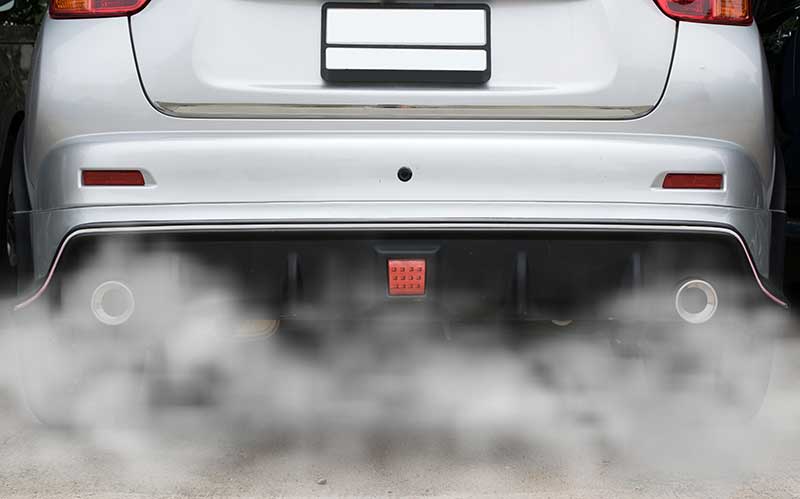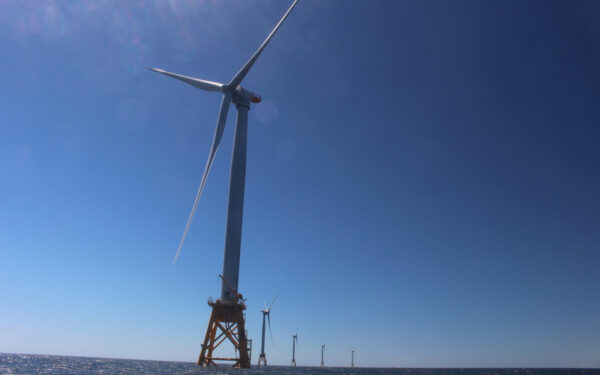
Photo by Orlando Stocker via Shutterstock
Yesterday, the Environmental Protection Agency and National Highway Traffic Safety Administration (NHTSA) took an unfortunate step backwards. The agencies are trying to roll back federal vehicle emission and fuel-efficiency standards, which are required by the Clean Air Act.
These two sets of standards do two different but related things. The vehicle emission standards place limits on the greenhouse gases emitted from the tailpipes of cars and trucks, while the fuel-efficiency standards set a miles-per-gallon floor for automakers. And the standards are very successful: in addition to helping the environment, they save you money, too.
How Emissions and Fuel-Efficiency Standards Work in Practice
I live in Rhode Island, so I’ll use it as an example. According to the Union of Concerned Scientists, Rhode Island has already saved $110 million due to EPA’s vehicle standards. And if the current standards remain in place, the average Rhode Island household will save an additional $2,700 by 2030 and 2,200 jobs will be created in the state.
If the smallest state in the country can see such savings, imagine how the rest of the United States has benefited. But if the Trump administration has proven anything over the last six months, it’s that it never turns its back on its friends in big industry – including auto manufacturers and Big Oil.
So it’s no surprise that EPA and NHTSA announced yesterday that they are “reconsidering” these vehicle emission and fuel efficiency standards. Luckily, you have an opportunity to tell EPA and NHTSA to protect this important program. Read on for details!
How These Standards Came to Be – And How to Save Them
Vehicle emission and fuel-economy standards have their roots in the Clean Air Act, which requires EPA to set standards for pollution from new motor vehicles. Back in the 2000s there was a legal battle over whether greenhouse gases could be regulated under this rule. This skirmish included a stop at the Supreme Court (check out Massachusetts v. EPA, in which CLF participated) and ended in a 2009 finding by EPA that, yes, greenhouse gases do pose a danger to public health. Once EPA made this “endangerment finding,” the next step was to issue vehicle standards.
EPA and NHTSA followed with a set of vehicle standards in 2010, covering cars and trucks from model years 2012-2016. Then in 2012, EPA and NHTSA issued new, more ambitious regulations setting standards for model years 2017-2025. Recognizing that 2025 was pretty far away, these regulations also provided for a “mid-term evaluation” to determine whether the standards would remain appropriate in light of changing facts and technologies. The ultimate deadline for this mid-term evaluation was April 1, 2018.
Fast forward to January 2017: EPA found that auto manufacturers were ahead of schedule meeting the required standards. So it finalized its mid-term evaluation early, indicating that the standards issued in 2012 remained appropriate. According to EPA’s website, these standards work. EPA projects that the standards will
- Cut 6 billion metric tons of GHG over the lifetimes of the vehicles sold in model years 2012-2025;
- Save families more than $1.7 trillion in fuel costs;
- Reduce America’s dependence on oil by more than 2 million barrels per day in 2025.
What This Means
Nevertheless, EPA and NHTSA are considering rolling back these vehicle emission and fuel-economy standards.
Specifically, EPA and NHTSA announced that they had reopened the mid-year evaluation process by initiating a public comment period seeking input on whether the 2012 standards are appropriate under the Clean Air Act.
It’s no secret that EPA Administrator Scott Pruitt wants to use this new process to gut the emission standards. Contradicting his own agency’s data and analysis, Administrator Pruitt has claimed that the “standards are costly for automakers and the American people.”
Of course, what’s actually costly for the American people is wasting government time and money to create an unnecessary, sneaky administrative process. Particularly one aimed at dismantling a program that saves us over a trillion dollars while also helping us avoid the worst consequences of climate change.
What You Can Do
The good news is that a public comment period gives you the opportunity to weigh in. You can let the federal government know that you support clean air by going to the regulations.gov portal and telling Administrator Pruitt to leave the current vehicle standards in place. Let him know that you want to continue to save all of us money, and to reduce harmful greenhouse gas emission. All he has to do is leave the current standards in place.




